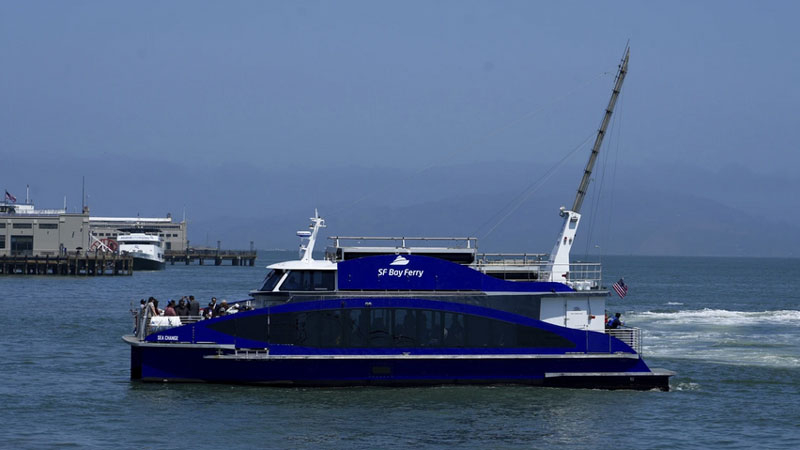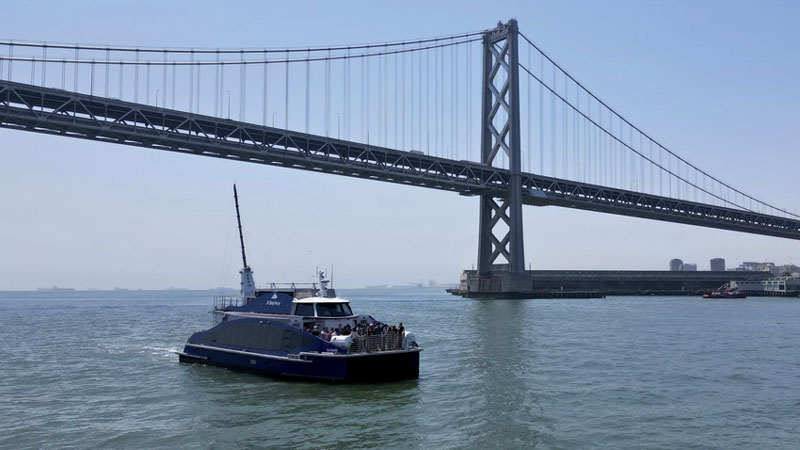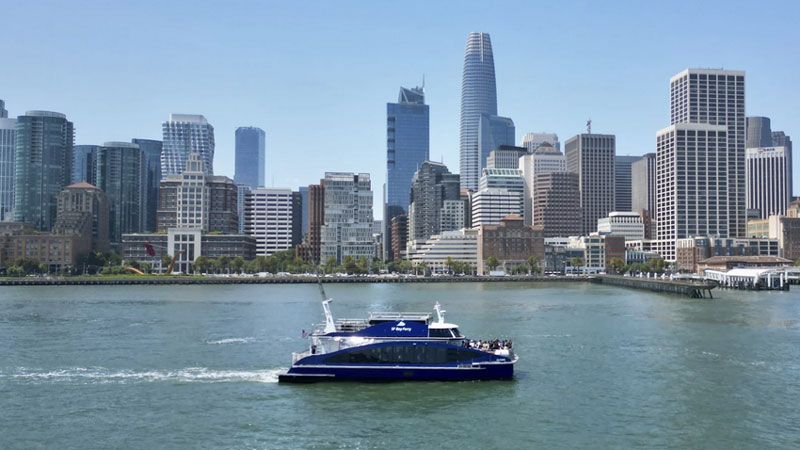Starting July 19, the world’s first hydrogen-fuelled commercial passenger ferry will begin regular service across the San Francisco Bay. For six months (while the vessel is being tested), the service will be free. The ship will be able to carry up to 75 passengers on each voyage. The small step will be the first on the road to carbon-free shipping, officials say.

Image source: AP/Terry Chea
The 21-meter catamaran vessel MV Sea Change was built by Bay Ship and Yacht in Alameda, California, and All-American Marine in Bellingham, Washington. Its electric propulsion systems are powered by energy generated by hydrogen fuel cells. The hydrogen supply on board is enough to cover 300 nautical miles (555 km) or a 16-hour journey. Exactly how long and in what mode the ship will travel is not specified. It is said that it will run along the coast along the bay from Pier 41 to the pier at the San Francisco Central Passenger Terminal.

Hydrogen fuel promises to be central to countries’ efforts to decarbonize transport from trucks to rail, aviation and shipping. But this will only happen when hydrogen is produced using renewable energy. In this case, it will be obtained using electrolysis – the splitting of water into hydrogen and oxygen under the influence of electricity, and the electricity will be generated by solar and wind power plants. In this ideal world, ordinary water will flow out of the exhaust pipes of vehicles, and not carbon dioxide with impurities of heavy metals.

Even earlier, fuel cells for shipping began to be used in Europe. Thus, in the summer of 2023, a container ship powered by hydrogen fuel began plying along the Rhine. Soon the fleet of such vessels will number more than a dozen. The US experience with hydrogen passenger ferries will be another contribution to the treasury of carbon-free shipping and an example of the practical implementation of environmentally friendly transport technologies.